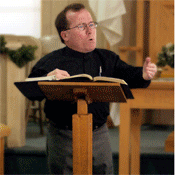The Son Shall Rise
ST. LOUIS (BP)--The year 1515 brought new responsibilities to a young German monk named Martin Luther. He became the overseer of 11 monasteries, and began lecturing on the book of Romans. Luther knew God demanded righteousness, and he tried with all his might to be a good monk. However, in studying Romans he awoke to see the righteousness demanded by God is a righteousness provided by God, the imputed righteousness of Christ. Luther said, "What does avail is God's imputation of righteousness for Christ's sake, through faith." Luther found the Gospel and the Gospel found him. Less than two years later, Luther sparked the Protestant Reformation by nailing his 95 Theses to the church doors at Wittenburg.
Meanwhile, around the same time in another German monastery, Matthias Grünewald began to paint what is considered his greatest work, the "Isenheim Altarpiece" -- a series of paintings of Christ that make up one masterpiece. One element of that altarpiece is "Resurrection," which is shown on this page.
Read more of this opinion on Baptist Press.











No comments:
Post a Comment